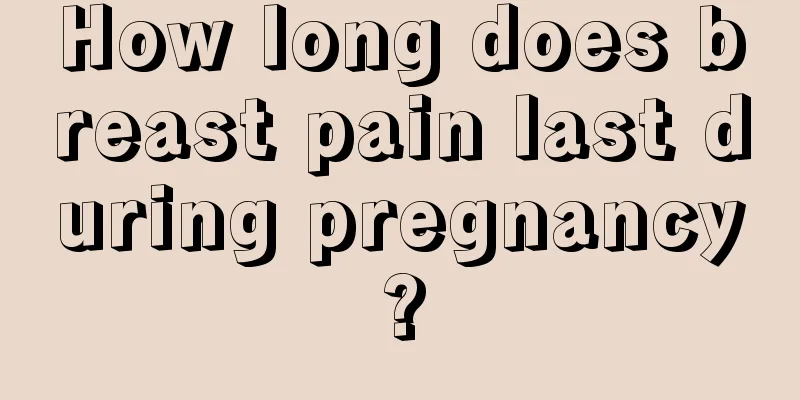How long does it take to treat gynecological inflammation?

|
For women suffering from gynecological inflammation, gynecological inflammation will inevitably have a great impact on their lives. Patients certainly hope to cure their gynecological inflammation quickly. However, gynecological inflammation in women often takes a long time to cure due to the special physiological structure of the site of disease occurrence. So, for women with gynecological inflammation that is treated normally, how long does it usually take to be completely cured? How long does it take to treat gynecological inflammation? Gynecological inflammation is a common disease caused by pathogenic microorganisms invading the reproductive organs and causing infection of the fallopian tubes and ovaries. It is divided into acute and chronic types. The symptoms of acute gynecological inflammation are obvious, such as fever, chills, severe lower abdominal pain, etc. Chronic gynecological inflammation causes varying degrees of abdominal pain, or a feeling of heaviness and pulling in the lower abdomen, which may be mild or severe, accompanied by symptoms such as increased vaginal discharge, back pain, and menstrual disorders. Chronic gynecological inflammation will not be cured immediately by medication, but the symptoms will gradually ease. This disease is not effectively treated with antibiotics alone and should be treated with anti-inflammatory and anti-adhesion drugs, Chinese medicine for promoting blood circulation and removing blood stasis, and physical therapy. If there is a clear localized lesion, surgical treatment can be performed, and medication must be taken continuously during treatment for at least one month. Experts remind patients not to stop taking medication when they think their symptoms have eased, as this will cause them to relapse soon. In addition, physical therapy can be used in combination. The effects of physical therapy can dissipate local edema, soften scars, promote intestinal peristalsis, promote blood circulation, and greatly improve local lesions. At the same time, when treating gynecological inflammation, lower reproductive tract infections should also be actively treated. Vaginitis and cervicitis may cause pathogens to ascend. For female friends who are treating gynecological inflammation, in addition to seeking medical treatment in time and actively cooperating with the doctor's treatment, they also need to pay more attention in daily life and maintain good hygiene habits and living habits to ensure that the affected area is in a good recovery environment. This will shorten the time required for treatment and achieve better recovery. |
<<: Causes and treatments for hand joint pain in pregnant women
>>: What happens if my period is delayed for two days?
Recommend
How to store lotus root so that it does not turn black? How to store the lotus root you bought
Lotus root, also known as lotus root or lotus veg...
What are the causes of pelvic pain in pregnant women?
We all know how hard it is for women to give birt...
Do breast lumps require surgery?
Breasts are a symbol of feminine charm, and their...
What is the nutritional value of fried dough sticks? Why do we fry two fried dough sticks together?
Youtiao contains some mineral components, carbohy...
What seasonings should be added when cooking noodles? How to store dried noodles without insects
Dried noodles are made by adding salt, alkali and...
Why is it said that the blood pressure control target for the elderly is “dynamic”?
An elderly friend told Huazi that he heard that t...
Can you get pregnant without menstruation?
If a female friend does not have her menstruation...
Summer is coming, is it reliable to lose weight by sleeping?
Summer is coming, and losing weight is becoming a...
What is the reason for the sudden increase in leucorrhea?
Female friends generally don’t care about the sud...
Will it hurt for women to have an IUD inserted?
Many people choose to use an IUD for contraceptio...
What milk to drink when you are pregnant
You can drink milk when you are just pregnant, ma...
What causes nipple pain?
Breast pain is a common phenomenon in normal time...
Where does a woman's hernia grow?
In real life, hernia is a relatively common disea...









